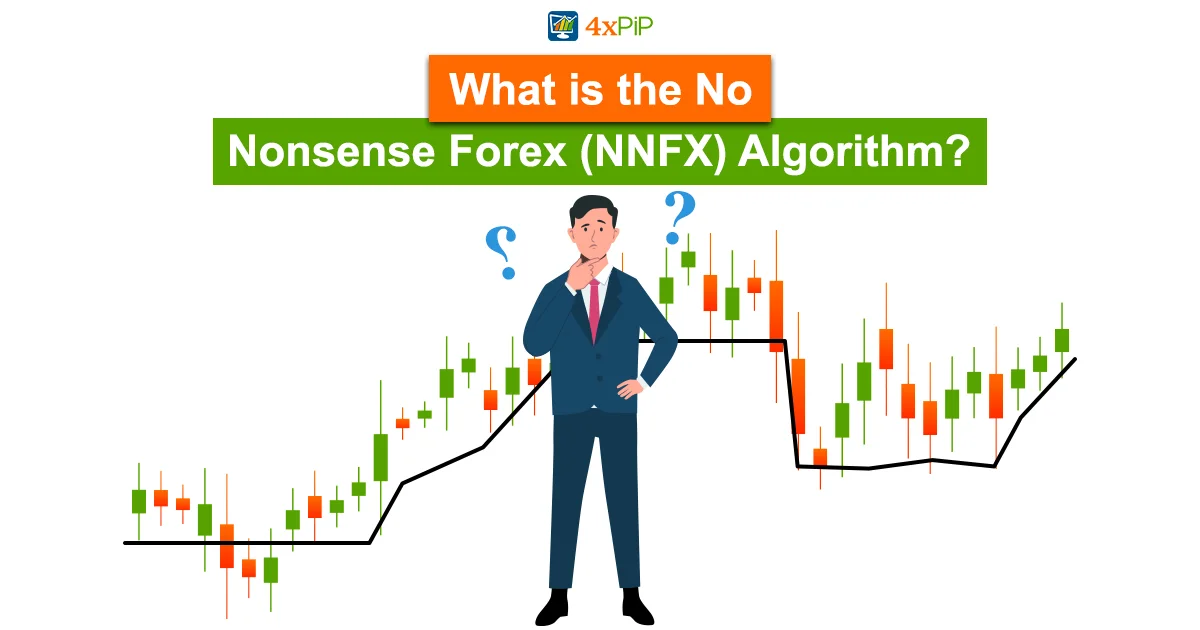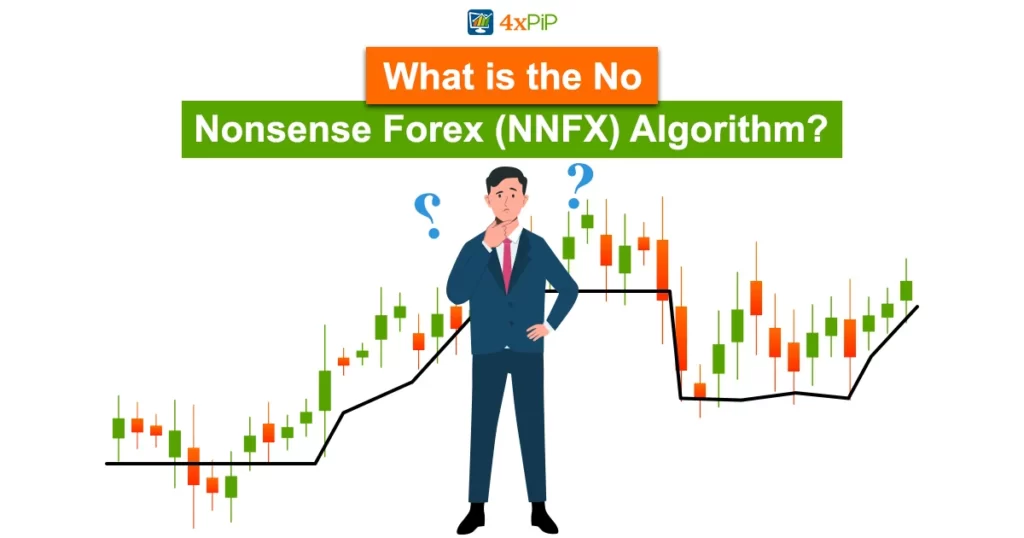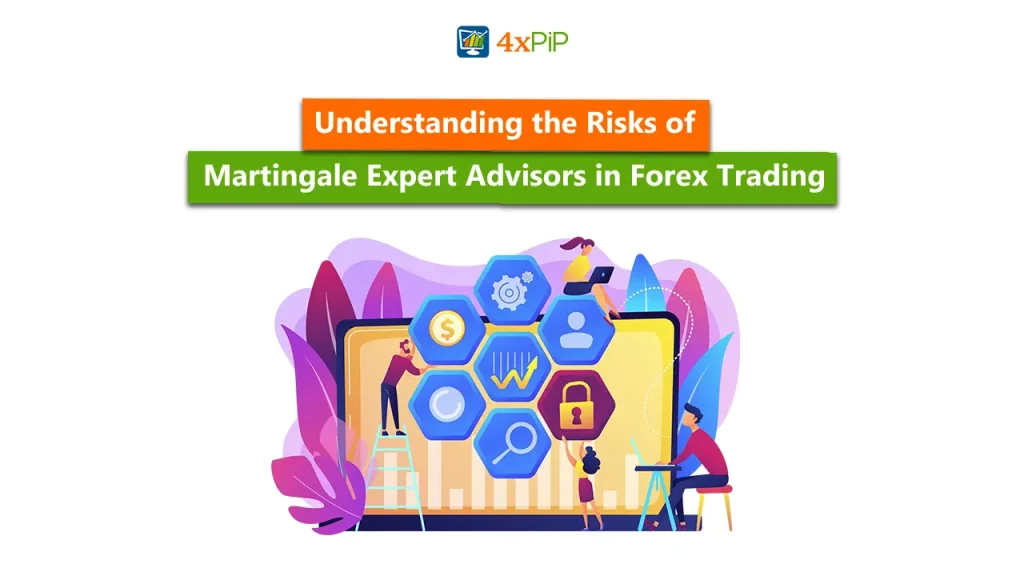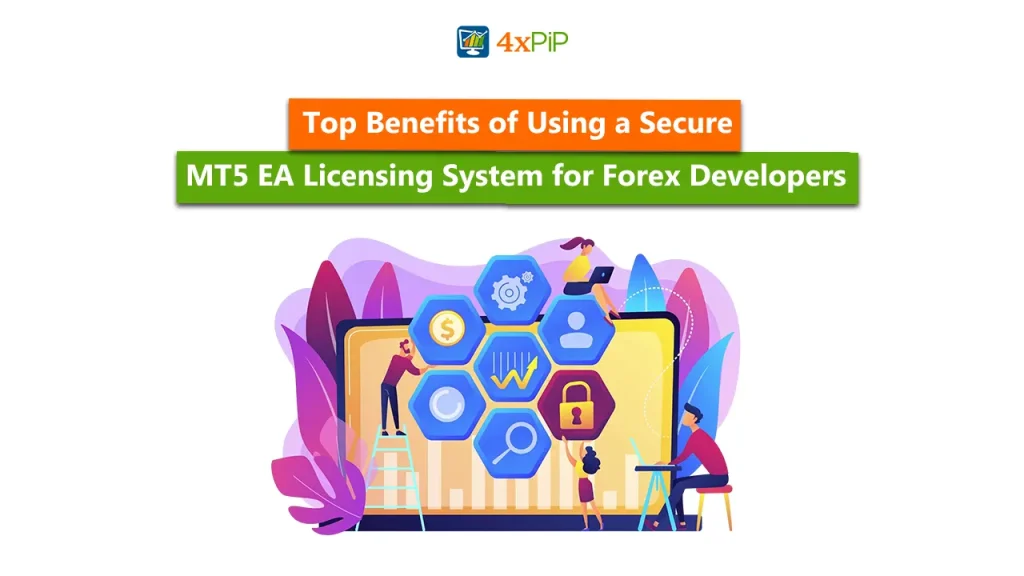Explore No Nonsense Forex (NNFX), a strategy for making money in forex trading. This guide covers the important principles, indicators, and strategies of NNFX, a popular approach that follows trends. Learn why NNFX stands out in the world of currency trading. Welcome to a simple and effective way to trade forex.
What is the No Nonsense Forex (NNFX) Algorithm?
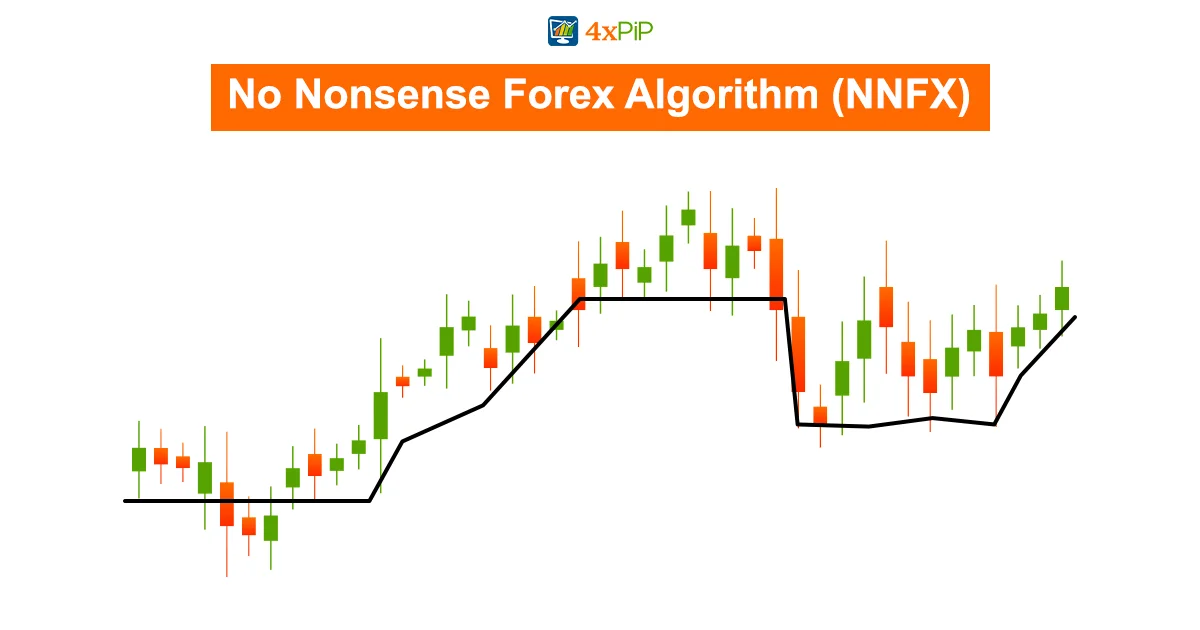
The No Nonsense Forex (NNFX) algorithm is based on a trend-following strategy that trades on a daily timeframe and has a strong money management system.
Here are some key points about the NNFX algorithm:
Indicator-Based: The NNFX algorithm is primarily based on indicators. It uses a combination of different indicators to identify potential trading opportunities.
Trend Following: The NNFX algorithm is a trend-following strategy. This means it attempts to profit from the market by capturing medium to long-term trends.
Daily Timeframe: The NNFX algorithm trades on a daily timeframe. This means it makes trading decisions based on the daily price movements of currency pairs.
Strong Money Management: The NNFX algorithm uses a strong money management system that dynamically adjusts lot sizes based on the Average True Range (ATR) of the currency pair.
Avoids News: The NNFX approach deliberately avoids a significant amount of economic news. In numerous instances, when the news discloses specific currency or economic changes, the market undergoes substantial shifts in certain directions based on the provided information.
Backtesting: The NNFX method emphasizes the importance of back-testing the indicators and the algorithm before applying it to live trading.
The Average True Range (ATR):
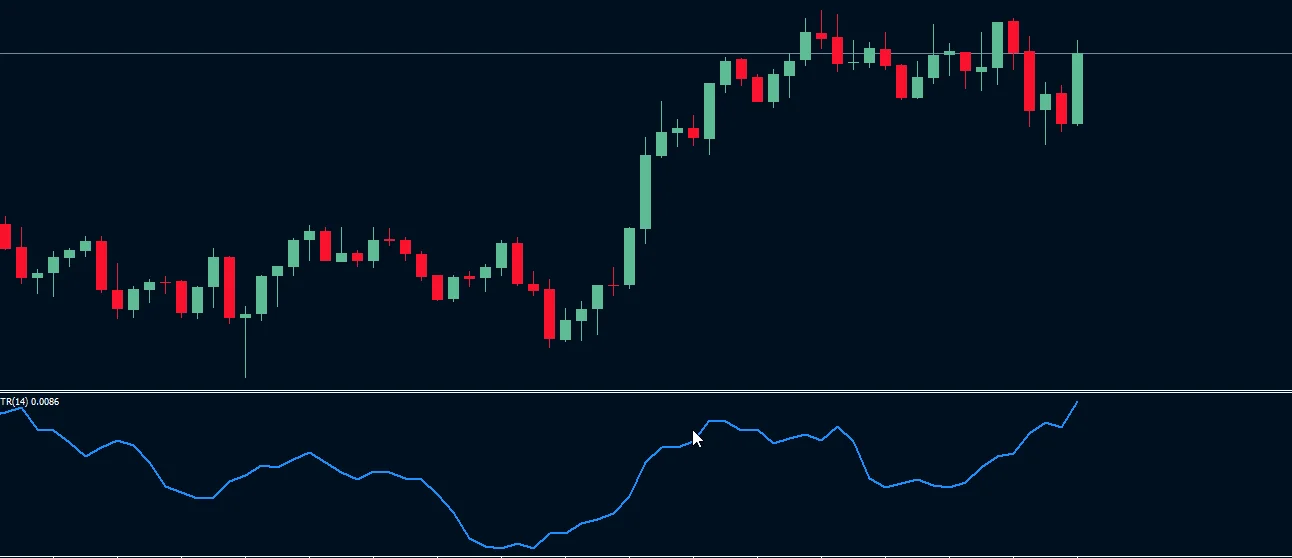
In stock market analysis, analysts use the Average True Range (ATR) as a tool to gauge the extent of price changes in a stock. It helps traders understand how volatile, or unpredictable, the market is.
To calculate ATR, you look at the price range of a stock for a certain period. This range is the highest price minus the lowest price during that time. ATR considers three factors: the current high minus the current low, the absolute value of the current high minus the previous day’s closing price, and the absolute value of the current low minus the previous day’s closing price. These values are then averaged over a specific number of days, usually 14, to get the ATR.
Traders can adjust the number of days for calculation. Shorter periods give more signals for trading, while longer periods provide fewer signals but are more reliable.
Kaufman’s Adaptive Moving Average (BASELINE):
Kaufman’s Adaptive Moving Average (KAMA) was an Indicator created by Perry Kaufman to smooth out price movements in the market. It adjusts itself based on how much the prices are swinging. When the market is calm, KAMA sticks close to the price. But when prices start swinging a lot, KAMA follows from a distance. This helps in figuring out the overall trend, finding turning points, and filtering out noisy price changes.
I’ve added ATR bands for Forex traders who like to keep things simple. Based on Wilder’s original calculations, ATR smoothens out using a regular moving average, not some complicated method.
Traders following No Nonsense Forex (NNFX) can use this indicator as a starting point. I’ve also included various price derivatives for you to choose from.
For those using an Expert Advisor (EA), the numbers you need for different lines are 0 for the KAMA line, 1 for the upper ATR line, and 2 for the lower ATR line.
Main Confirmation Indicator (C1):
In the No Nonsense Forex (NNFX) algorithm, the Main Confirmation Indicator (C1) is an important component. It’s used as the primary entry confirmation indicator for an NNFX algorithm or multi-indicator strategy.
The C1 indicator is used to confirm the direction of the trade suggested by the baseline indicator. If the baseline suggests a long trade, the C1 indicator should also indicate a long trade, and vice versa.
Extensive back-testing determines the selection of the C1 indicator. The process includes testing approximately 20 confirmation indicators across 2 years of data and 5 pairs, examining default, reduced, and increased settings. We conduct further in-depth testing on the best 5 indicators (4 years back-test) to determine the main one around which we will build the rest of the algorithm
It’s important to note that the specific indicator used as C1 can vary depending on the trader’s preference and the results of their back-testing. C1 can use 50 different indicators included in the NNFX Algo Tester. Some traders may also choose to use custom indicators as their C1.
For example, Try using the Rate of Change (ROC) indicator as a C1 indicator. It helps you see how fast prices are changing, which can signal if a trend is about to reverse or continue. When the value is above zero it means there is an upward movement, while values below zero means a downward movement in the market. Pay attention to ROC crossovers, overbought/oversold conditions, or differences and similarities with price movements for timely buy or sell signals. Adjust the number of periods to match your trading style.
2nd Confirmation Indicator (C2):
In the No Nonsense Forex (NNFX) algorithm, the 2nd Confirmation Indicator (C2) is another critical component. It’s used as a secondary confirmation for the trading signal.
The role of the C2 indicator is to provide additional confirmation to the signals given by the Main Confirmation Indicator (C1). If both C1 and C2 agree, it increases the confidence in the trading signal.
The specific indicator used as C2 can vary depending on the trader’s preference and the results of their back-testing. The NNFX Algo Tester includes 50 different indicators that can be used as C2. Some traders may also choose to use custom indicators as their C2.
Just like with the C1 indicator, the effectiveness of any indicator used as C2 can vary based on market conditions and the specific parameters used. Therefore, it’s crucial to thoroughly back-test any indicator before using it in live trading.
For example, Add the Aroon Up and Down indicator as a C2 indicator in NNFX. This indicator helps you figure out how strong and in which direction a trend is going by looking at the time since the highest and lowest closing prices in a set period. This indicator has two lines one is green and the other one is red. When both of these lines cross each other that means the market is going from one trend to another and it is a potential trend reversal. If the green line is going upward it means that it is an uptrend and a potential buying opportunity and if the red line goes up that means it’s a downtrend and a potential opportunity to sell. Use Aroon alongside other tools like Average True Range (ATR) to improve when to buy or sell. Remember, no single indicator guarantees success, so using Aroon with other indicators boosts your ability to make good trading choices.
Volume Indicator (V1):
Buff Dormeier created the VPCI to show the balance between price trends and volume-adjusted price trends. When prices go up with increasing trading volume, it means people are impatient to buy, and the market has the energy to grow. If prices go up without much trading volume, it means people are not interested, and the uptrend is likely to fail.
On the other hand, a falling price trend indicates a market driven by fear. If prices fall without much trading volume, it means people are not actively selling, and the fear is not strong. Unlike greed, fear can last a long time without any increase in selling. If more selling starts happening during a fearful period, it’s like adding fuel to the fire, and the market tends to stay bearish until things change.
In some cases, when fear is at its peak, and many weak-minded investors have sold their holdings, it creates a point of extreme fear and panic. This is when the VPCI falls below a certain level and then rises, forming a ‘V’ shape. This pattern is a sign that the worst may be over, and the market could start recovering.
Exit Indicator (EXIT):
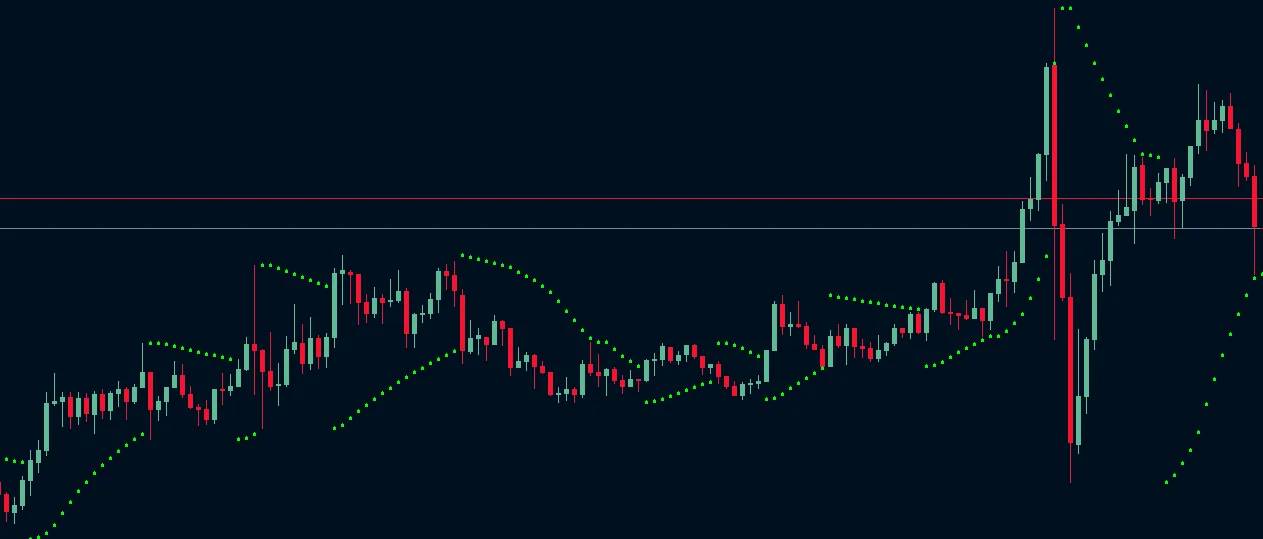
The Waddah Attar Explosion is a volatility indicator that can be used to signal when the market is becoming less volatile. When the Waddah Attar Explosion decreases, it could be a signal to exit the trade.
If you’re unfamiliar with Waddah Attar’s explosion indicator, it’s a histogram of a MACD. MACD is the difference between a fast and a slow-moving average. The explosion line shows the difference between the upper and lower Bollinger bands, and the dead zone line indicates volatility using an ATR calculation with a fixed period of 100.
In the future, I might explore the idea of applying standard deviation directly to the price. However, it’s important to note that this approach has some drawbacks, as prices don’t follow a normal distribution. John F. Ehlers’ work on the Fisher Transform could be useful in addressing this issue.
Another indicator that can be used as an exit indicator is Parabolic SAR. It tells you which way the trend is going. It works well when the market is stable but might give wrong signals in a shaky market or when prices are moving sideways. If you’re using it to decide when to buy or sell, look out for it crossing above the security’s price (consider selling) or below the security’s price (consider buying). This suggests a change in the trend and can guide you in setting a stop-loss order to lower your risk.
Trade Management:
Let’s suppose we place a buy trade. In normal cases, we have only place one take profit. However, in the No Nonsense Forex strategy, two profits will be placed. One will be lower than the other one. The lower take profit level is called “first take profit”, while the higher take profit level is called “second take profit“ or “Final take profit”. When the price hits the first take profit, the stop loss is adjusted to the entry point of the buy trade. This is also called breakeven and we can say that stop loss will be moved to breakeven. This will only occur when the price reaches the first take profit and 50% buy trade is closed, the remaining 50% will be closed either on the second take profit or the trailing stop loss.
Conclusion:
In summary, the No Nonsense Forex (NNFX) strategy provides a clear and effective approach for people interested in forex trading. It focuses on using indicators, following trends, and testing strategies thoroughly. NNFX is a strong framework for traders dealing with the ever-changing currency market. We at 4xPip recommend you make the most of NNFX, adding accuracy and profitability to your trading. Explore this strategy, and remember, 4xPip is here to offer expert advice and advanced trading tools. Improve your trading with NNFX and create a successful path in the forex world. Get additional support at 4xpip.com and start your journey to trading success.
FAQs
What is the NNFX Algorithm?
The NNFX algorithm, from the No Nonsense Forex channel, is a trend-following strategy focused on daily timeframes and robust money management.
How does NNFX utilize indicators?
NNFX relies on a combination of indicators to identify trading opportunities, emphasizing back-testing for accuracy.
What role does the Average True Range (ATR) play?
ATR, a volatility measure, is crucial in NNFX’s money management, dynamically adjusting lot sizes based on currency pair movements.
Tell us about Kaufman’s Adaptive Moving Average (KAMA).
KAMA smoothens price movements, aiding in trend identification and filtering out noisy price changes for NNFX followers.
What is the Main Confirmation Indicator (C1) in NNFX?
C1 is a vital entry confirmation tool, aligning with the baseline indicator to validate trade directions after rigorous back-testing.
How does the 2nd Confirmation Indicator (C2) contribute?
C2 acts as a secondary confirmation, boosting confidence in trading signals when it aligns with the Main Confirmation Indicator.
What does the Volume Price Confirmation Indicator (VPCI) signify?
VPCI, created by Buff Dormeier, gauges the balance between price trends and volume-adjusted price trends, providing insights into market sentiment.
Explain the Modified Explosion Indicator (EXIT).
A modification of Waddah Attar’s indicator, EXIT uses ATR and linear regression to smooth out volatility signals for informed exit decisions.
Why does NNFX avoid news in its approach?
NNFX steers clear of economic news to maintain a consistent strategy, as sudden shifts in the market can result from news announcements.
How can traders benefit from the NNFX Algo Tester?
The NNFX Algo Tester offers 50 different indicators for C1 and C2, providing traders with a diverse toolkit for algorithm testing and customization.

